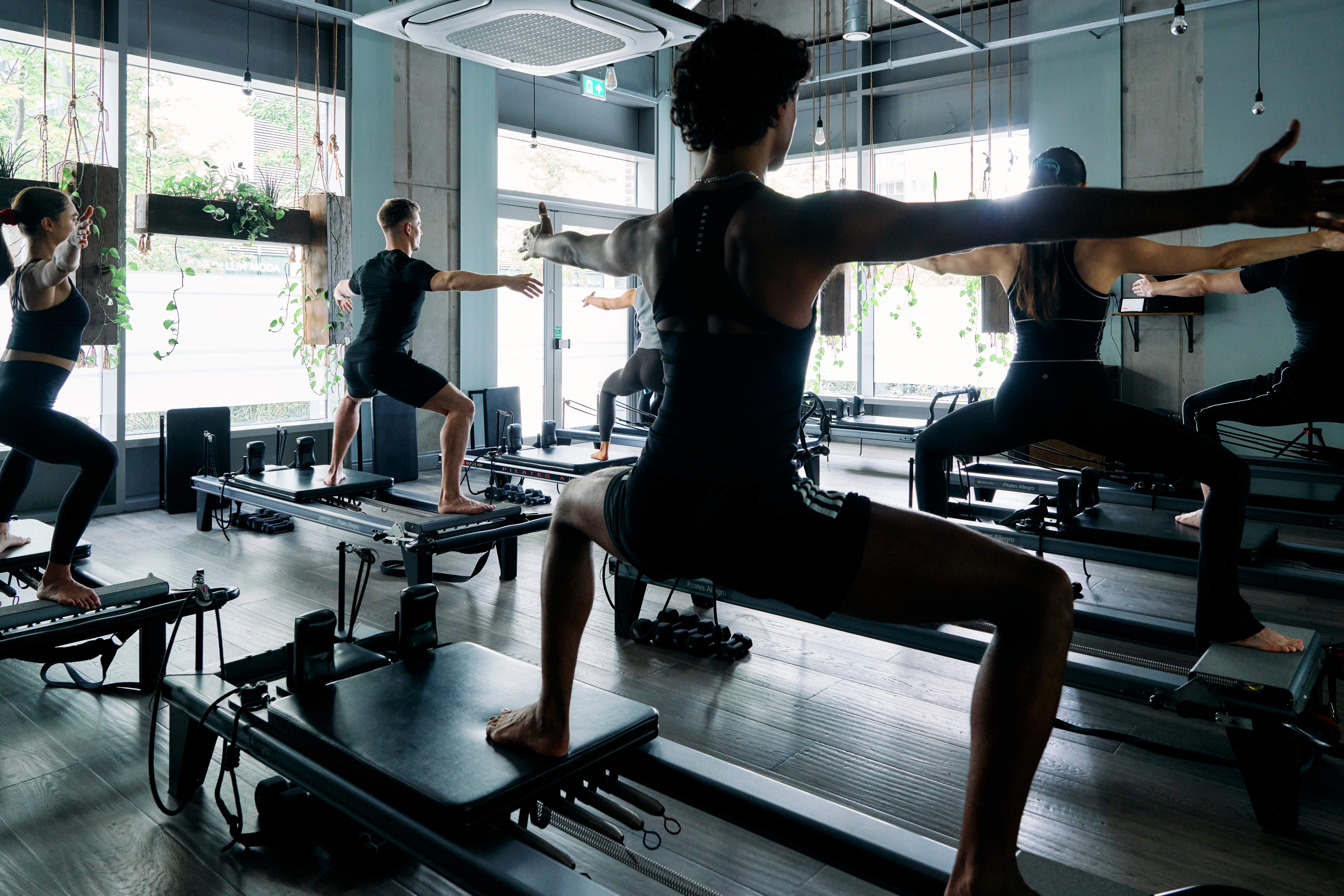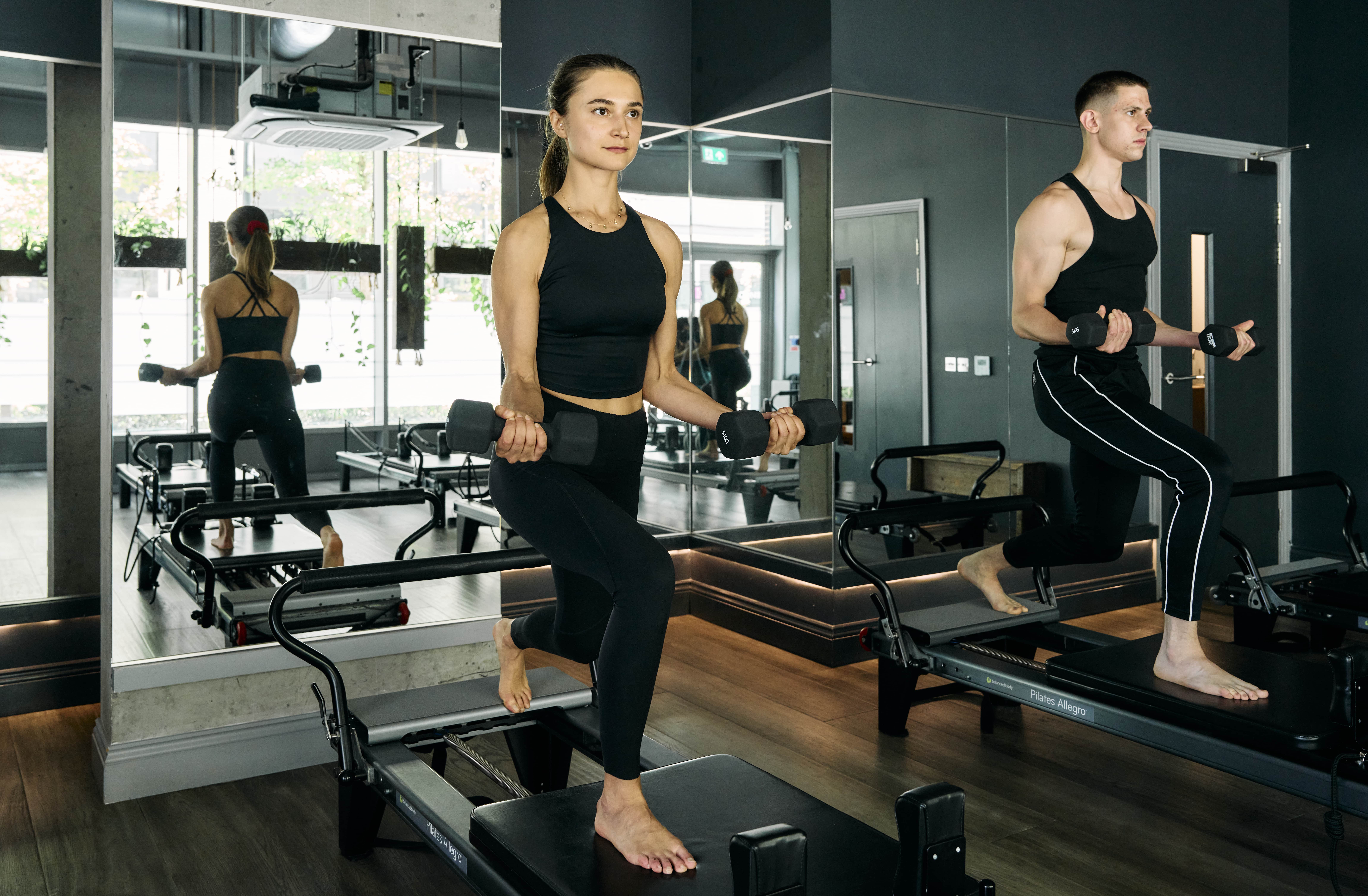Are you looking to get fast, effective results from your training? If so, one way to achieve this is through tempo training, a technique that involves adding deliberate speed, pace or tempo to each exercise. This method increases time under tension—a key factor in muscle tone and calorie burn. By incorporating set tempos into your routines, you can achieve improved strength, more effective fat loss, and greater muscle tone. Tempo training is all about moving under control. Instead of mindlessly moving through your reps, you will break each movement down into its fundamentals: an eccentric portion, a concentric portion, and two isometric portions in between (one at the top and one at the bottom of the lift). Each portion of the movement is assigned a number, corresponding to how many seconds that part of the exercise will take you.
Understanding Tempo Training
Tempo Training is a method that can be applied to any exercise, and it works very well with Pilates and HIIT. It involves performing each movement with a specific rhythm or tempo, usually measured in beats per minute (BPM). For instance, you might perform a set of push-ups at a tempo of 3-0-1-0 (three seconds down, no hold, one second up, no hold). This approach helps to develop muscle control and endurance, as well as improve your overall form and technique.
Exploring the Four Phases of Tempo Training
Tempo training breaks down movements into four distinct phases. Each phase focuses on different aspects of muscle engagement and control. An example of this is Tempo 301.
- 3 – Eccentric Phase (Lowering): The first number in the tempo sequence indicates the duration it takes to perform the eccentric, or lowering, phase. For instance, during a squat, this is when you lower your body to the bottom position, taking 3 counts to reach it.
- 0 – Isometric Phase 1 (Pause at Bottom): The next number specifies the duration of the pause at the bottom of the movement. In 301 specific training, there should be no pause before a quick upward movement.
- 1 – Concentric Phase (Lifting): The third phase involves lifting or moving back to the starting position. Marked by a “1” in our sequence, this phase is intended to be explosive and swift, emphasising the power of your ascent.
- 0 – Isometric Phase 2 (Pause at Top): The final number represents a pause at the top before beginning the next repetition. In this instance, there will be no pause before going into the next rep.
Comprehensive Benefits of Tempo Training
Tempo training enhances exercise by emphasising control and precision through slower, deliberate movements. This method improves muscle engagement, reduces injury risk, and boosts both strength and endurance. It also enhances mental focus, aids in recovery, and promotes muscle toning. By incorporating tempo into your training, you can achieve a more effective, sustainable and well-rounded workout.
Tempo training teaches control:
By slowing down the movements. This helps to maintain correct form and execution, which is particularly important in exercises that are prone to momentum use, such as bench presses or bicep curls. By emphasising control, you can engage the primary muscles correctly, reducing the risk of injury and increasing the effectiveness of the exercise.
Builds Better Understanding of Movement Positions:
By incorporating pauses and slow movements, tempo training helps you gain a deeper awareness of your body’s positioning and alignment during each exercise phase. This can be particularly beneficial in Pilates, where precision and form are paramount.

Enhances Muscular Endurance and Strength:
The deliberate pacing in tempo training increases time under tension—a key factor in muscle tone and endurance. This approach helps strengthen the muscles used in Pilates, supporting better posture and core strength.
Improves Mental Focus and Discipline:
Following a specific tempo requires concentration and adherence to the rhythm of the exercise, enhancing your mental engagement and discipline during workouts. This mindful practice translates into better overall performance and technique in Pilates.
Increases Metabolic Demand:
Incorporating specific tempos into your workouts increases the metabolic demand of each exercise. The slower and more controlled movements, along with intentional pauses, require your body to expend more energy, even during less dynamic phases of the exercise. This increased energy expenditure can lead to better fat-burning and improved metabolic health over time.
Reduces Risk of Injury:
Tempo training helps to reduce the risk of injuries that can occur during faster, uncontrolled movements. By emphasising control and proper form, you’re less likely to make sudden, incorrect movements that can strain muscles or joints. This methodical approach ensures that your body maintains alignment and balance, safeguarding against common injuries associated with high-speed training.
Facilitates Recovery and Rehabilitation:
For those recovering from injuries or dealing with chronic pain, tempo training can be particularly beneficial. The controlled, deliberate pace allows for gentle, precise movements that can be crucial for rehabilitation purposes. By adjusting the tempo, exercises can be tailored to individual recovery needs, providing a means to strengthen muscles and joints without overexertion.
Promotes Muscle Hypertrophy:
Tempo training is particularly effective for muscle growth (hypertrophy) due to the increased time under tension during the slow eccentric and isometric phases while lifting heavy weights. This prolonged stress on the muscles triggers adaptive responses that lead to muscle fibre growth. By manipulating the duration of each phase, you can target specific muscle groups and encourage their development, which is especially beneficial in strength and conditioning programs. However, since we don’t lift heavy weights in Tempo Pilates classes, hypertrophy is not the primary focus. Instead, our approach emphasises muscle engagement and tone, control, overall functional strength and calorie burn.
Enhances Proprioceptive Skills:
Proprioception refers to the body’s ability to sense its position, motion, and equilibrium. By focusing on slow, controlled movements, tempo training helps enhance these sensory feedback mechanisms. This improved proprioception is crucial not only for athletic performance but also for everyday activities, as it enhances overall coordination and balance.
Aids in Plateau Overcoming:
Incorporating tempo changes can be a strategic way to overcome training plateaus. When progress stalls with traditional training methods, altering the tempo can introduce new challenges, forcing the body to adapt. This can be particularly effective for those who have hit a wall in their strength gains or weight loss efforts, providing a fresh stimulus for continued improvement.

Incorporating Tempo Training into Pilates
Applying the principles of tempo training to Pilates can revolutionise your practice. By adjusting the speed of traditional Pilates exercises like the teaser, roll-up, or plank, you can intensify the challenge and focus on muscle engagement and stability. For example, performing a slower, controlled roll-up not only strengthens the abdominal muscles but also ensures that every muscle group is engaged correctly throughout the movement. Tempo training also encourages and promotes proper breath control with each movement, enhancing the mind-body connection and ensuring optimal oxygen flow to working muscles.
Incorporating tempo training with Pilates principles like breath, concentration, control, and precision can elevate your practice to new heights. For more detailed guidance on incorporating tempo training into your Pilates practice, book a class with us at Tempo 301!
How Tempo Training Can Enhance HIIT
Tempo training can enhance High-Intensity Interval Training (HIIT) by adding control and precision. Integrating slower movements into HIIT workouts helps:
- Improve Form: Reinforces proper technique, reducing injury risk.
- Increase Muscle Engagement: Ensures full muscle activation.
- Boost Strength and Endurance: Adds time under tension to build strength.
- Enhance Metabolism: Increases calorie burn and metabolic health.
- Prevent Overtraining: Allows for active recovery and fatigue management.
Combining tempo training with HIIT leads to more balanced and effective workouts. To find out more visit our SE17 | Elephant Park studio and join a Tempo HIIT class!
Tempo training is a powerful tool for unlocking your full fitness potential, maximising calorie burn, and achieving results fast! By incorporating controlled, deliberate movements into your workout routine, you can enhance muscle engagement, improve form, and reduce the risk of injury. This method not only builds strength and endurance but also boosts your metabolic rate and supports better recovery. Whether you’re integrating tempo training into your HIIT sessions, using it to refine your Pilates practice, or adding it into your gym routine, the benefits are clear.
At Tempo 301, we enhance tempo training by synchronising movements to music, using counts of 4, 8, 16, and 32. This approach not only makes workouts more engaging but also helps you maintain a consistent pace and rhythm, amplifying the effectiveness of your exercises. With increased mental focus, improved proprioception, and the ability to overcome training plateaus, tempo training provides a comprehensive approach to achieving your fitness goals. Join us at Tempo 301 and experience the power of tempo training to music!
Want to try some different tempos at the gym? Try these from Men’s Health Magazine… Or looking for a reformer Pilates class near you? Try a Tempo 301 Pilates or HIIT class and enjoy your 1st 3 classes for £45 introductory offer!
Are there HIIT Classes Near Me?
Our calorie-burning HIIT classes can be found in South London – SE17 – Elephant & Castle to book visit our HIIT class page.
Are there Reformer Pilates Classes Near Me?
Our highly addictive reformer Pilates classes can be found in the following locations – to book visit our studios page:
– Reformer Pilates South East London: SE17 – Elephant Park
– Reformer Pilates East London: E8 – Hackney
– Reformer Pilates Central London: E1 – Shoreditch
Are there Beginner Reformer Pilates Classes Near Me?
All our London Pilates classes have the level clearly indicated on them. Our L1 – Tempo Pilates classes, Beginner Pilates classes and Contemporary Pilates classes are suitable for beginners. Visit our studio pages to see if one of our Reformer Pilates London studios might be near you.
Alternatively, visit one of our Google pages below to find directions, find updated studio hours or read Google reviews.
• Google page | SE17 – Elephant Park
• Google page | E8 – Hackney
• Google page | E1 – Shoreditch

